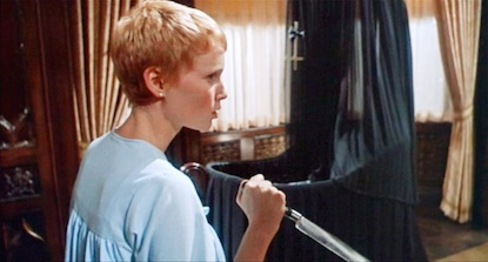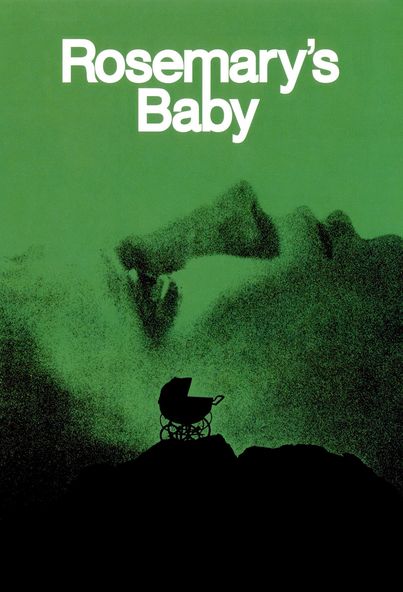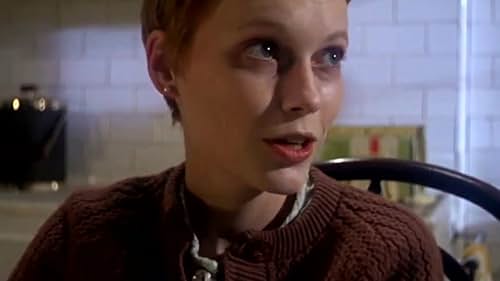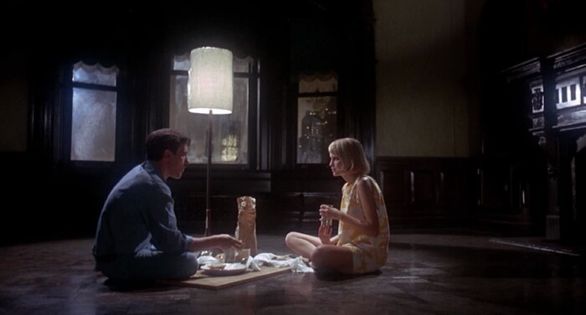Rosemary’s Baby (1968)

“Rosemary’s Baby” (1968): A Chilling Portrait of Paranoia Directed by Roman Polanski
Released in 1968, “Rosemary’s Baby” is a landmark psychological horror film directed by Roman Polanski, based on the novel by Ira Levin. The film stars Mia Farrow as Rosemary Woodhouse, a young woman who becomes embroiled in a sinister plot involving her pregnancy and the unsettling intentions of her neighbors. With its exploration of themes such as paranoia, motherhood, and the loss of autonomy, “Rosemary’s Baby” has become a classic of the horror genre.

The story follows Rosemary and her husband, Guy (John Cassavetes), as they move into a Gothic apartment building in New York City. Shortly after their arrival, they meet their eccentric and seemingly friendly neighbors, the Castevets (played by Ruth Gordon and Sidney Blackmer). As Rosemary becomes pregnant, she begins to suspect that her husband and the Castevets are part of a dark conspiracy to use her baby for sinister purposes. The film masterfully builds tension and dread as Rosemary’s sanity unravels, leaving viewers questioning what is real and what is a product of her fears.

Polanski’s direction is notable for its atmospheric tension and psychological depth. The cinematography by William Fraker captures the claustrophobic feel of the apartment and the oppressive atmosphere that surrounds Rosemary. Polanski expertly uses close-ups and framing to enhance the film’s sense of paranoia, immersing viewers in Rosemary’s increasingly troubled perspective. The haunting score, composed by Krzysztof Komeda, adds to the film’s unsettling ambiance, effectively heightening the emotional stakes.

“Rosemary’s Baby” is classified as a psychological horror film, but it also serves as a commentary on the societal pressures faced by women, particularly regarding motherhood and autonomy. Rosemary’s journey reflects a profound struggle against the control exerted over her body and choices by the men in her life. The film challenges traditional notions of femininity and the expectations placed on women, making it a poignant exploration of women’s rights and personal agency.

Mia Farrow’s performance as Rosemary is a standout element of the film. She brings an incredible depth of vulnerability and strength to the character, making Rosemary’s descent into fear and paranoia both believable and heartbreaking. Farrow’s portrayal captures the innocence and desperation of a woman caught in a web of manipulation, making her plight deeply resonant. The supporting cast, particularly Ruth Gordon as the manipulative and unsettling Minnie Castevet, enhances the film’s tension, adding layers of complexity to the characters’ interactions.
Upon its release, “Rosemary’s Baby” received critical acclaim and was a commercial success. It has since been recognized as a seminal work in horror cinema, influencing countless filmmakers and contributing to the genre’s evolution. The film’s blend of psychological terror and social commentary has solidified its status as a classic, often cited for its innovative storytelling and compelling performances.
In conclusion, “Rosemary’s Baby” is a chilling and thought-provoking horror film that showcases Roman Polanski’s masterful direction and Mia Farrow’s powerful performance. With its exploration of paranoia, motherhood, and the struggle for autonomy, the film remains a significant entry in the horror genre. As Rosemary navigates the treacherous waters of trust and betrayal, “Rosemary’s Baby” serves as a haunting reminder of the fears that lurk beneath the surface of domestic life, making it a timeless classic that continues to resonate with audiences. Its enduring impact on cinema and culture cements its place as one of the greatest horror films of all time.











